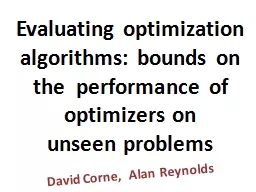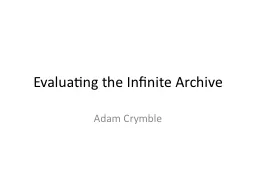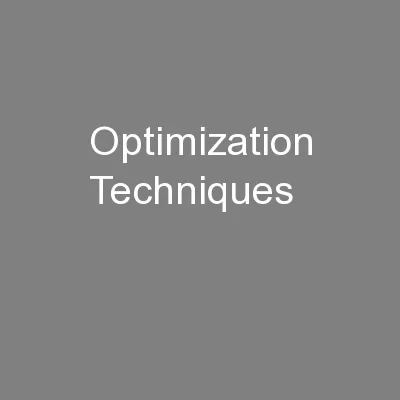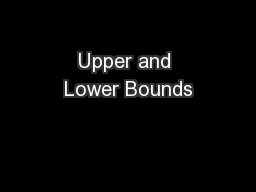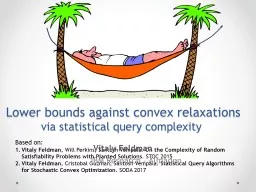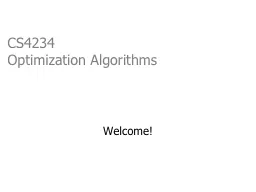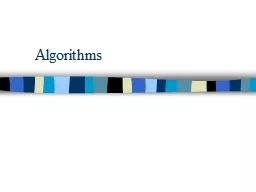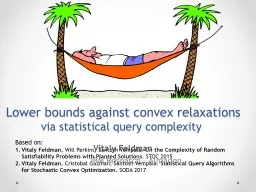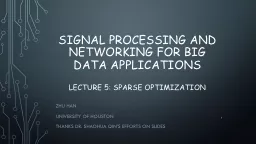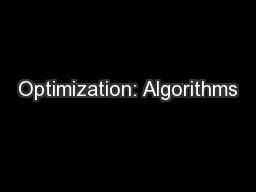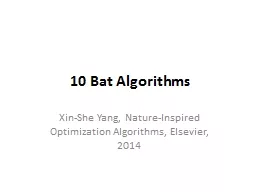PPT-Evaluating optimization algorithms: bounds on the performa
Author : ellena-manuel | Published Date : 2016-11-26
unseen problems David Corne Alan Reynolds My wonderful new algorithm Beeinspired Orthogonal Local Linear Optimal Covariance K inetics Solver Beats CMAES on
Presentation Embed Code
Download Presentation
Download Presentation The PPT/PDF document "Evaluating optimization algorithms: boun..." is the property of its rightful owner. Permission is granted to download and print the materials on this website for personal, non-commercial use only, and to display it on your personal computer provided you do not modify the materials and that you retain all copyright notices contained in the materials. By downloading content from our website, you accept the terms of this agreement.
Evaluating optimization algorithms: bounds on the performa: Transcript
Download Rules Of Document
"Evaluating optimization algorithms: bounds on the performa"The content belongs to its owner. You may download and print it for personal use, without modification, and keep all copyright notices. By downloading, you agree to these terms.
Related Documents

